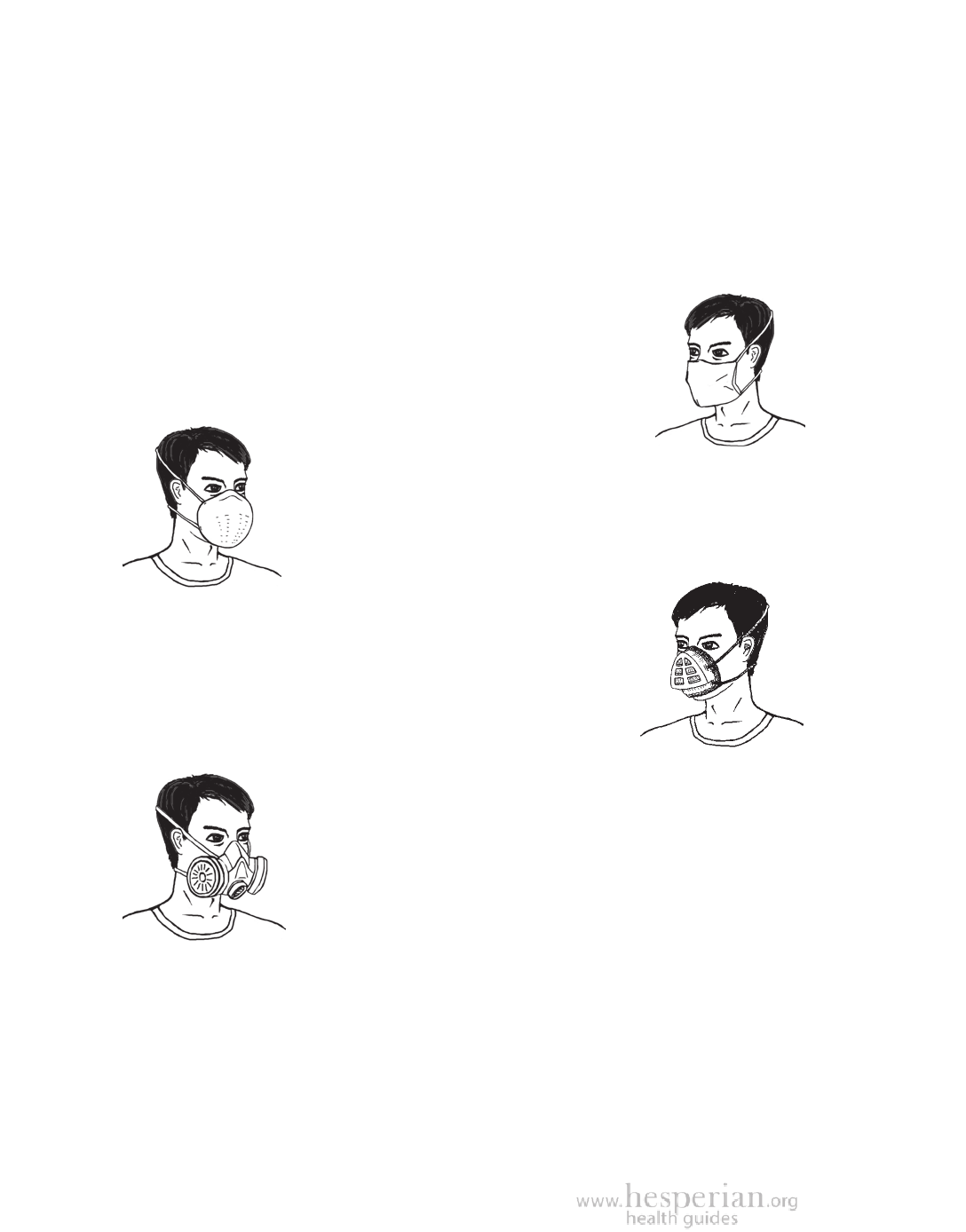
550 Appendix a: Safety and Emergencies
Protective masks
The best ways to prevent harm from breathing in toxic chemicals and dust are
to have good ventilation when working with them, and to wear a protective
mask made to protect against the chemicals you are working with. If you feel
ill from a chemical while wearing a mask, it is a sign the mask is not working
properly, or that you are being exposed to that or some other toxic chemical in
some other way.
Loose cloth or paper mask
This mask will help keep out some dust. It will not stop you
from breathing in chemical fumes. Fumes pass through paper
and cloth and leak in around the edges of a loose-fitting mask.
Tight-fitting paper mask
This mask will protect from dust. The mask should touch
your face all the way around. It will not stop you from
breathing in chemical fumes. These masks clog up or
wear out quickly and must be replaced when they no
longer touch the face all around.
Plastic dust mask
This mask will protect from dust better than a loose cloth
or tight paper mask. The mask should touch your face all
the way around. It will not stop you from breathing in
chemical fumes.
Rubber respirator
This rubber mask with filters MAY keep you from
breathing in chemical fumes. It must fit your face tightly
so no air leaks in between your skin and the mask. You
will probably need a different filter for each chemical
and must change the filter often. You will need special
training to fit, use, and clean this mask. This mask is
hot and uncomfortable to wear. When working with
chemicals, take breaks often in an open, well-ventilated
area where you can safely remove the mask.
A Community Guide to Environmental Health 2012